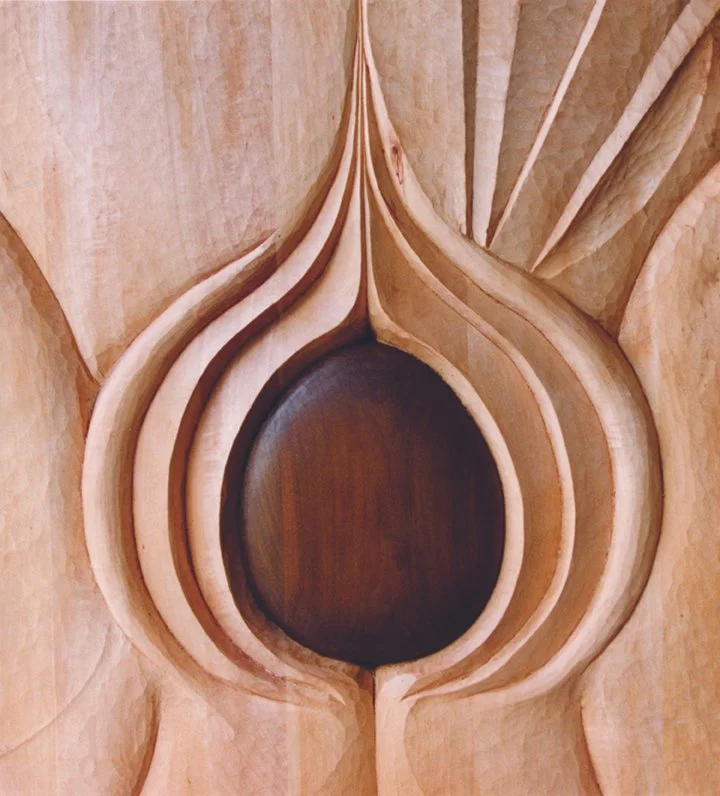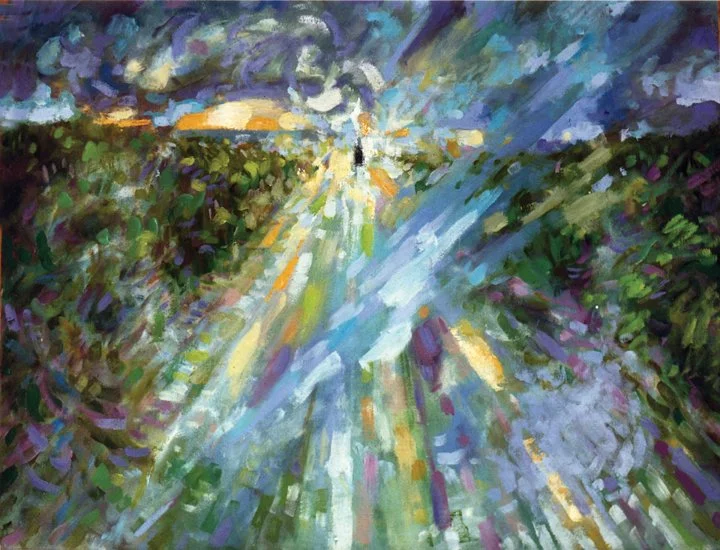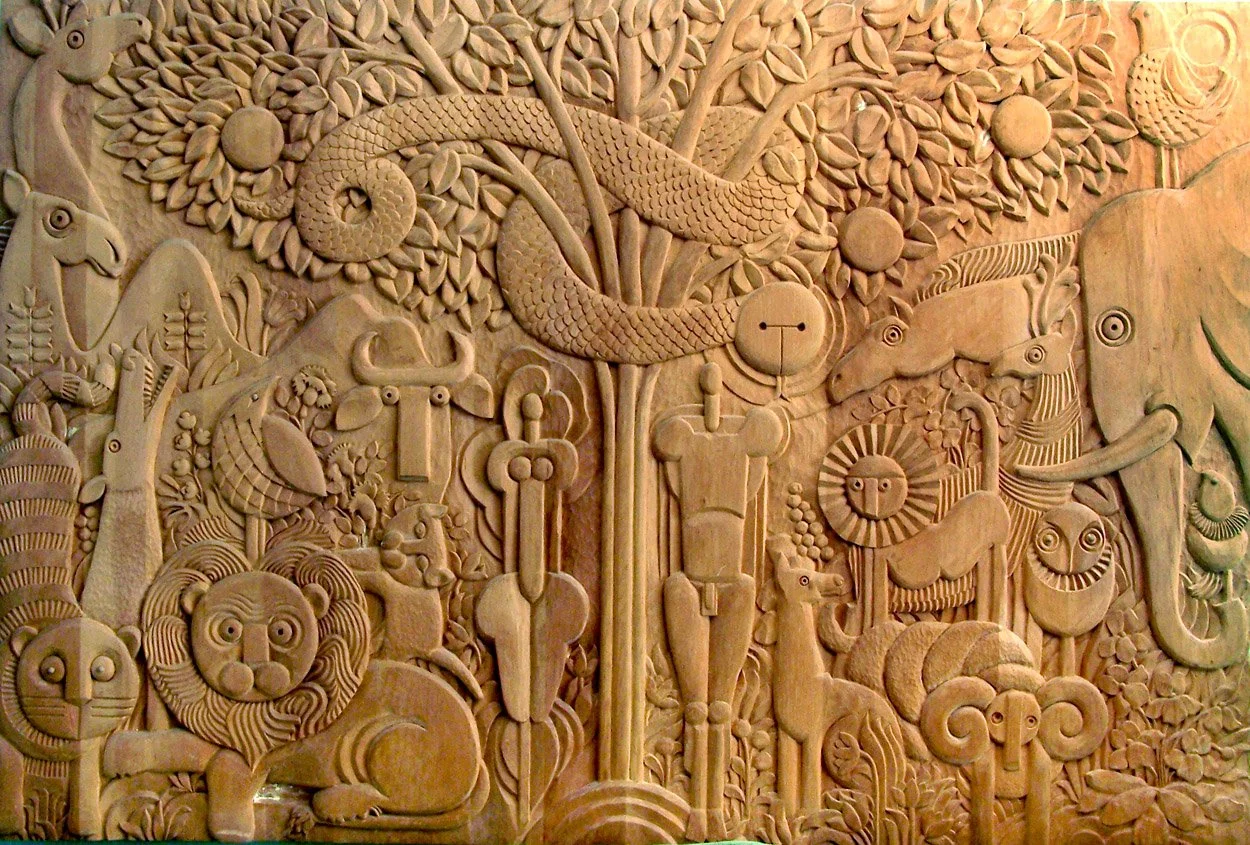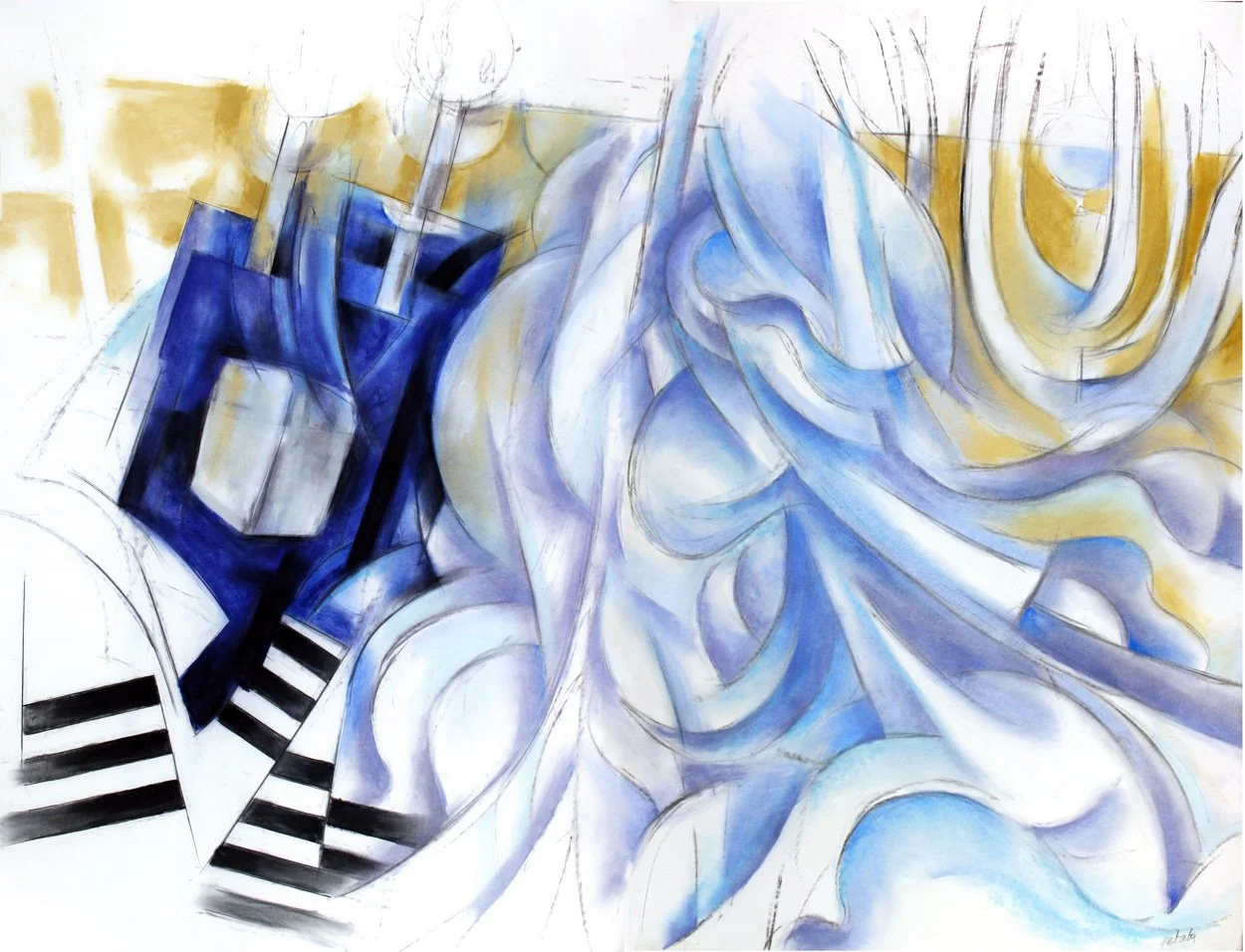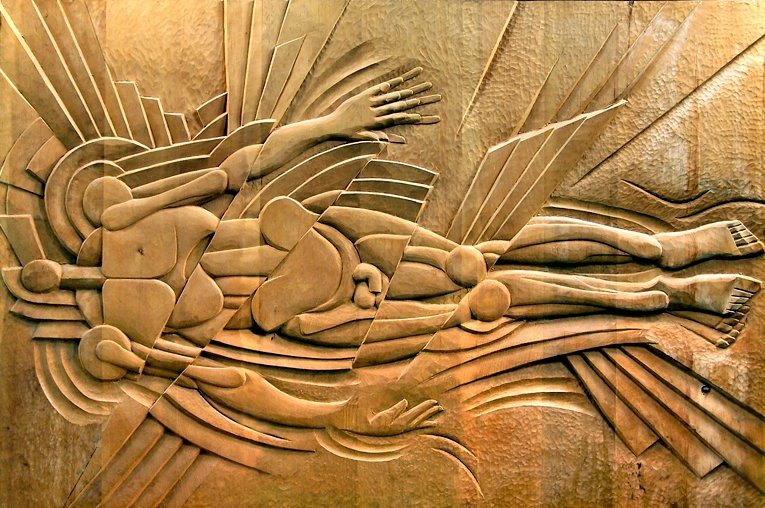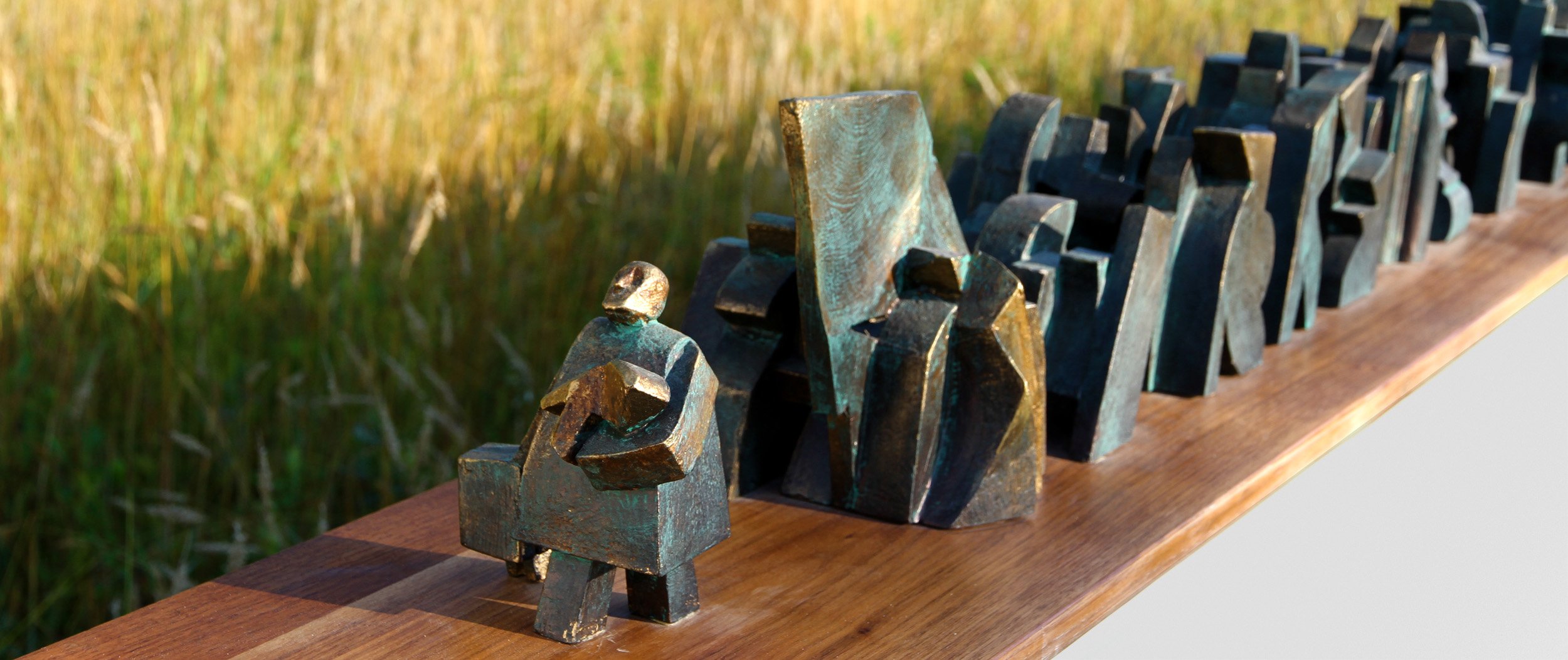
Art As Remembrance
Ellen M. Umansky, Ph.D.
The Carl and Dorothy Bennett Center for Judaic Studies at Fairfield University is honored to bring Norman Gorbaty to the University campus in conjunction with the Walsh Gallery’s two month exhibition of many of his Jewish-themed works. On February 9, 2011, Norman will deliver the biannual Samuel and Bettie Roberts Memorial Lecture in Jewish Art. This lecture, made possible through an endowment to Fairfield University by Larry Roberts and Suzanne Novik, honors the memory of their parents who shared a love of the visual arts (Bettie was an award-winning portraiture painter, Sam an accomplished nature photographer) and were supporters of Fairfield University’s Bennett Center. I can think of no one better suited to give this lecture than Norman Gorbaty, whose strong sense of Jewish self-identity can be seen in each of the pieces included in what is the first comprehensive gallery exhibition of Norman’s Judaic works.
As a modern Jewish historian and theologian, I am struck by the ways in which he uses shapes, images, color, and movement to successfully convey the multi-faceted nature of Judaism as both religion and way of life. There is an immediacy about Norman’s work that deeply moves me, drawing us into specific moments in the history, literary narrative, holiday celebrations, and life cycle events of the Jewish people. Reflecting the words of the Passover seder that enjoin us to remember the Israelites’ years of servitude “as if we [ourselves] were slaves in the land of Egypt,” Norman’s uses art as remembrance. Through works that are astonishing in size, scope, and diversity of artistic expression, he makes us feel not just as though we were there, but as if we are there: underneath a chuppah (bridal canopy) in the shul (synagogue) in the Brooklyn neighborhood of his youth; dancing with a Torah on Simchat Torah, wrestling with the angel along with the biblical Jacob; walking with the Jewish orphans of the Warsaw ghetto as they were sent to their death.
The enormous wooden bas reliefs with which the Walsh Gallery exhibition opens, literally invite us into the biblical story of creation. Wide-eyed, the animals of the garden of Eden directly face us as we, like them, harmoniously stand next to the naked Adam and Eve, experiencing life in the idyllic garden. As both viewer and participant, we awake as Adam awakes, like Eve, we struggle with the serpent, and as Adam and Eve slowly walk out of the garden, their heads bowed, ashamed of their act of disobedience, our eyes are drawn to them, and we feel ourselves leaving the garden as well, into a world that is infinitely more complex and demanding.
As Norman Gorbaty’s sculptures, paintings, and works on paper show, the world into which we are born is one in which life is alternately cherished and destroyed. It includes moments of joy, sadness, connection, loneliness, illumination, and horror. Norman’s initial vision of life after Eden is universal. The birth of Cain, “the first murderer,” signals the fact that our world is fraught with problems that human beings as a whole have created and to which we must reply as “Godlike…caretakers.” Yet as the works of art following the birth of Cain suggest, to Gorbaty, how we actually see the world, and whether or how we resolve to change it, is often rooted in the particular context of our lives. For Norman himself, that context is clearly Jewish. The son of Eastern European immigrants, he grew up with a strong sense of Yiddishkeit (Jewishness): speaking Yiddish in the home, celebrating Jewish holidays, living in a Jewish neighborhood in Brooklyn, and reading, or having read to him, works of Jewish literature. He listened to his mother’s stories of the life she’d left behind and of her relatives who remained in Europe, including her parents, who along with other members of her family, perished during the holocaust. From his father, he learned that to be a Jew means to care for other human beings and to make the world more just. “From my mother,” Norman told me, “I learned about the beauty of Judaism; from my father, I learned what it means to live as a Jew.” From both of them, it seems, he came to identify strongly with the Jewish people, viewing Jewish history, not as a series of linear, external events, but rather as that which continues to take place within him. “I didn’t ask to be a Jew,” Norman has told me, “but it’s who I am.”
Thus, the human “problems” that Norman remembers through this exhibit are those that have beset the Jewish people. They include the massacre of Jews during the First Crusade, the anti-semitic pogroms of late 19th and 20th century Europe, trains that sent Jews in Nazi-occupied Europe to the death camps, and the refusal of the British and the Turks to give refuge to the hundreds of Romanian Jews who consequently died at sea in the dilapidated ship, the Struma. Similarly, the responses to such problems are Jewish ones, reflecting both historical reality and Jewish hopes and values. The Jewish orphans of Warsaw are not depicted as victims of the holocaust, but as those who, along with their teacher and mentor, Janusz Korzcak, silently and courageously marched to their death. The sculpture memorializing those who died aboard the Struma hoping to find refuge in Palestine, recalls the Jewish dream of the return to Zion, while the woman in the center of the bas-relief, holding up a baby in her out-stretched arms in an attempt to save him, is a reminder of the value of saving human life. Finally, giving visual expression to the rabbinic teaching not to despair of the world, the scenes of trains are not dark and riddled with shadow but strikingly infused with color and light.
The beauty of Judaism as a religion is lovingly conjured up in many of Gorbaty’s works. Though Norman’s own sense of Jewish self-identity is not expressed through regular synagogue attendance, his minimalist sculpture of a bimah (the stage from which prayer services are conducted) and pastels and charcoal drawings of Torah scrolls, synagogue menorahs (7 branched candelabrums), and tallitot (prayer shawls) bring us into the life of the synagogue. The angle from which the bride and groom of his “Marriage in the Synagogue” are viewed places us on the ground floor of the sanctuary, in the pews at the wedding. Similarly in “kapporos” (a ritual performed before Yom Kippur, practiced by few Jews today, in which a chicken takes on the community’s sins), we imagine our face superimposed on the faceless boy of the drawing. Each of us, in other words, is present at a ritual which in all likelihood we have never witnessed.
In his book Zakhor (Hebrew for the imperative “remember”), historian Yosef Yerushalmi astutely notes that the nature of Jewish memory has never been dispassionate recollection but rather evocation, identification, and reactualization. One finds all of these qualities in the Jewish art of Norman Gorbaty. Jewish identity is enriched, strengthened, and preserved through memory. Retelling, and as Gorbaty’s works so powerfully remind us, reimaging and re-experiencing the past connect us to rich and valuable resources of comprehension and meaning.
Ellen M. Umansky, Ph.D.
Ellen M. Umansky is the Carl and Dorothy Bennett Professor of Judaic Studies at Fairfield University in Fairfield, Connecticut, a position she has held since September of 1994. She received her B.A. degree in Philosophy from Wellesley College, her Master of Arts degree in Religion from Yale University, and her Ph.D. degree in Religion from Columbia University. She is the author of many essays, book chapters, encyclopedia articles, and books including From Christian Science to Jewish Science: Spiritual Healing and American Jews, published by Oxford University Press in 2005 and the co-edited Four Centuries of Jewish Women's Spirituality: A Sourcebook (1992; second revised and expanded edition, 2009). She is currently working on a new book, focusing on Judaism, feminism, liberalism, and God.
Jewish Wedding
Birth of Cain
Eden
Shabbat Wedding
Creation of Adam
Creation of Eve


